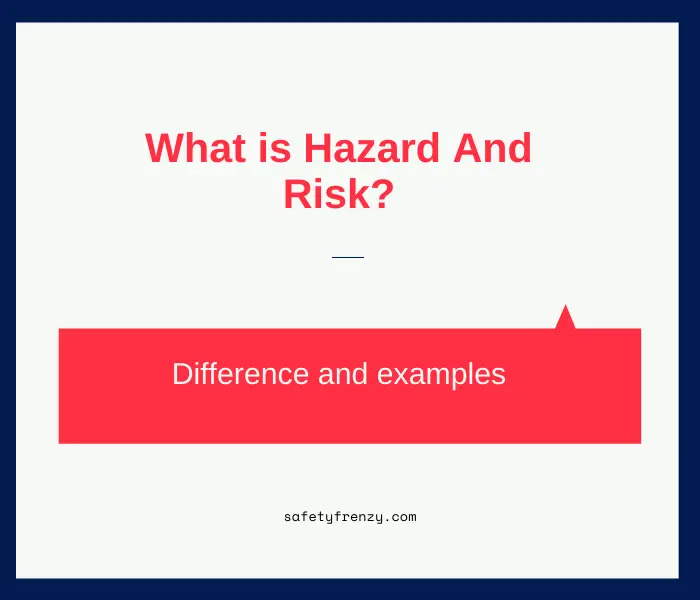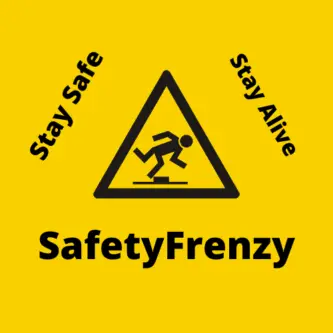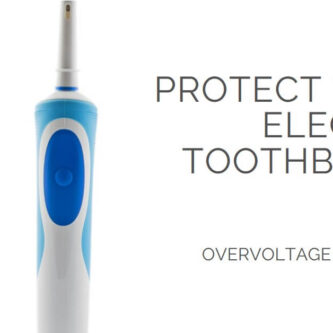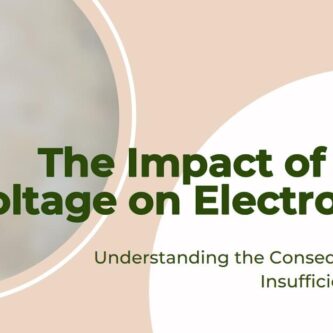Hazard and Risk are two different terms. While people use it interchangeably.
Simply, the risk is the probability, no matter its degree, of causing injuries or disease, i.e harming someone.
While the hazard is the source of the injuries or the disease, i.e the thing that can harm you.
Examples of risk and hazard are below in the article to better understand the difference.
What is Hazard?
In simple words, a hazard is something that can cause harm to a person, workers, or assets.
If we further define. A hazard can cause potential damage or have adverse health effects on something concerned with it.
Hazard Examples
- A knife is a hazard that can cause cuts.
- Welding activity is a hazard that can cause fire, burn, or metal fume fever.
- A wet floor is a hazard that can cause slips and falls
- Electricity can cause electric shock.
- Noise can harm your hearing.
- Working under stress can cause you injuries.
These are hazard examples. Of course, hazards can be classified into more than one type as below.
Different Types of Hazards
The hazard exists everywhere, but the workplace is more prone to accidents and hazards. To answer what is a hazard and a Risk? We will list different types of hazards at the workplace.
Safety Hazards
These types of hazards create unsafe work environments and conditions. Examples of these types of hazards are unprotected electric wires etc.
Read Also: Common safety hazards issues at the workplace
Physical Hazards
Environmental factors that affect workers at the workplace are called physical hazards. An example is heat, noise, vibrations, and radiation.
I have written a detailed article about Physical Hazard at Workplace, you can it here for more information.
Biological Hazards
These hazards are caused due to bacteria, viruses, and other insects. It’s most common in the healthcare sector.
Chemical Hazards
Hazards related to chemicals at the workplace are called chemical hazards. This may include improper storage and usage of chemicals without proper safety equipment.
Ergonomic Hazards
physical factors that cause musculoskeletal injuries may be referred to as ergonomic hazards.
What is Risk?
We define risk as, a chance of hazard, whether it will harm somebody or not.
The chances may be either high, low, or medium for the occurrence of a hazard.
difference between hazard and risk example
- If you are working at a height, this is a hazard that can cause you the risk of falling from this height. You may and may not fall. No matter.
- Smoking can cause cancer, Now smoking is a hazard and is the source of the disease, while the probability of getting the disease is the risk. Someone may get ill, while others may not at all. No matter what, smoking is still a hazard.
Two factors lead to risk i.e. likelihood and severity.
If almost all jobs have one or more hazards, How can we work with these hazards around us? The answer is, we can control the risk, and reduce the degree of its chance. Let’s see how we do this.
How Do We Control The Risk?
To investigate, eliminate and reduce risks at the workplace a risk assessment is necessary.
During the process of risk assessment, we identify hazards and risk factors. This will help us to identify potential threats that can cause harm to workers.
The next step is risk analysis and risk evaluation. During this process, we analyze and evaluate risks associated with hazards.
While the last step is to follow accurate steps to control and eliminate the hazards by setting safety precautions for the job.
For example, a job like replacing an 11 KV cutout fuse. This high-risk job has electrical hazards and working at height hazards.
The potential risks are electrocution, eye injury, head injury, fall from height, and pinch point. How to reduce the risks to perform the task safely?
We follow the following precautions to lower the probability of injuries:
- Isolate electrical power and apply LOTO.
- Ground the three phases of the OHTL.
- Use isolated gloves, safety glasses, hard hat, use an isolated bucket truck, wear isolated safety boots, and wear a safety harness.
- Inform all affected persons about power isolation.
- No one is allowed to stay on the ground just below us while working at that height, any falling tools can harm him hard.
- Use isolation blankets to cover the grounding wire and the pole body.
By applying these precautions, we just reduce the probability of the hazard harming anyone. However, the hazard is still there, but with a lower risk.
It’s just like a lion, vets can perform surgery on it, but when his hazard is limited and controlled by placing it under the control of general anesthesia.
Surgery on the lion was still a hazard, but we controlled the risk of being hurt by the lion.
Hazard Control Methods
Different control methods are common in daily life. Some of them are mentioned below.
- Isolating of hazards
- Using personal protective equipment
- Using administrative and engineering control methods
- Substituting hazards with lower risk.
| Hazard | Associated Risk | How To Reduce Risk |
| Electricity | Electrocution, Electrical fire, Burns, and Fatalities | Power isolation and LOTO, PPE, and training |
| Noise | Hearing loss | Ear protection PPE and reducing the noise source if possible |
| Working at heights | Falling from height | Use a Falling harness, Use a well-established scaffold |
| Chemical hazard | Burns, breathing illness, eye injuries | Wear full PPE for chemical work, Read MSDS for each chemical you work with, good training program |
| Welding activities | Eye injuries, burns, fire, and electrocution in case of electrical welding | Wear full welding PPE, and a fire extinguisher at the workplace, No working in wet locations |
Note that common control is wearing PPE, so it’s essential to have a good PPE program.




